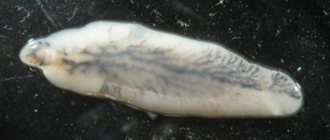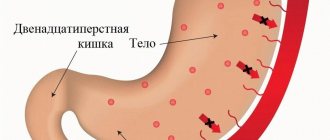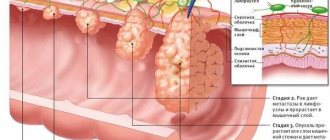Symptoms of intestinal parasites most often include abdominal pain, indigestion, trouble sleeping, skin rashes and irritability. Thus, the infection can be mistaken for another disease. Signs, as a rule, depend on the location of the parasites in the human intestine, their number and type. The causative agents of the invasion are helminths, and infections are protozoa. You can become infected by drinking contaminated water or food, or poorly cooked meat or fish.
Types of intestinal parasites
A variety of pathogenic organisms can live in the gastrointestinal tract. Some of them are the simplest. This is a whole group of unicellular, eukaryotic organisms. Once they enter the human body, they begin to parasitize it and provoke a wide range of clinical diseases.
Such infections are known as intestinal protozoa and are caused by the following microorganisms:
- Balantidium intestinalis.
- Blastocystis hominis.
- Cryptosporidium.
- Cyclosporidium.
- Dienthameba fragilis.
- Dysenteric amoeba.
- Intestinal lamblia.
- Sarcocyst.
- Izospora.
- Trypasonoma.
The most common route of transmission of protozoa is through the ingestion of water or food contaminated with human or animal feces.
Other parasites that are harmful to humans are intestinal worms. These are multicellular organisms that look like worms. Intestinal helminthiases include any disease caused by them. Worms are classified into round, flat and flukes. The following parasitic helminths live in the human intestines:
- Bull tapeworm.
- Wide tape.
- Pork tapeworm.
- Bertiella.
- Chinese fluke.
- Lanceolate fluke.
- Intestinal fluke.
- Gnathostomas.
- Megatonymus.
- Schistosoma.
- Echinostoma.
- Hookworm.
- Ascaris.
- Pinworm.
- Intestinal eel.
- Trichinella.
- Whipworm.
Worms in the stomach most often appear as a result of eating raw and not sufficiently heat-treated meat from livestock and poultry, wild animals, fish, shellfish, and crustaceans. Poorly washed greens, vegetables, and fruits are another infectious source. Worms in humans also appear as a result of non-compliance with hygiene rules. Most parasitic infections are common in hot and humid climates.
Types of worms in humans
Worms, or helminths, are parasitic worms that live off animals and plants, feed and reproduce inside living organisms. You and I are no exception.
— According to statistics, every third inhabitant of the Earth is infected with parasitic worms. It is assumed that there is not a single adult person during whose life not a single worm has settled in his body, says general practitioner, family doctor Aigul Kharisova , known online as @doctor_aygul.
In everyday life, people call almost all parasitic worms worms, without thinking about how many species of these unpleasant creatures there actually are.
Among all the parasitic worms that can exist in the human body, there are three main groups:
- nematodes related to roundworms: pinworm, whipworm, trichinella, roundworm;
- tapeworms, or flatworms related to cestodes (various types of tapeworms, tapeworms and echinococci);
- fluke parasites, or trematodes, causing opisthorchiasis, fascioliasis, schistosomiasis, paragonimiasis and other ailments.
Signs of infection
Many people are concerned about how to find out if there are worms in the intestines? Although helminth infections can resemble other diseases, parasite infestations have characteristic symptoms. But they most often vary depending on the number of pathogenic organisms, their type and the host’s immune response. Symptoms of worms in adults are often absent. People can live with parasites for many years without even knowing it. After all, in fact, few people know how the stomach hurts with worms. It also happens that infections caused by protozoan parasites or worms are very difficult.
If the invasion is severe, it most often manifests itself as follows:
- Problems with stool – diarrhea or constipation.
- General malaise.
- Unexplained pain in the abdomen.
- Temperature increase.
- Weight loss.
- Bloating.
- Nausea.
- Hives.
- Disorders of the gallbladder.
- Dehydration.
- Enlarged liver and spleen.
- Pain in muscles and joints.
Symptoms of worms in humans are explained by the fact that the worms cause local inflammation and provoke a systemic reaction. In addition, parasites secrete toxins that enter the bloodstream and poison the entire body. Therefore, the manifestations are so diverse - from abdominal cramps and changes in appetite to chronic fatigue and frequent colds.
Some people worry about whether worms can cause stomach pain? The answer is no, since worms do not live in the stomach. They simply cannot withstand an acidic environment. Parasites spend a very short time in the human stomach when they get there with food or water at the egg or larval stage. The next refuge for them is the small intestine, where they continue their lives in more favorable conditions.
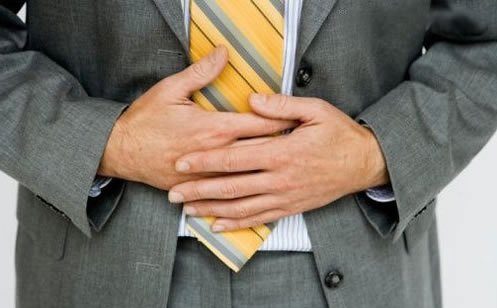
The stomach cannot hurt because there are worms in the stomach. The malaise is explained by their activity in the intestines.
Signs of parasites in the body
The appearance of spots on the skin or its roughening, early wrinkles and baldness, acne should alert you. Cracked heels and problems with nails are indirect symptoms of parasites in the body. These may include Trichomonas and Giardia. Any infection affects the functioning of the immune system, which can manifest itself as a sore throat, inflammation of the paranasal sinuses, or unexpected snoring.
In men, symptoms may include cystitis, prostatitis, sand and stones inside the bladder and kidneys, adenoma, and impotence. Infection with some parasites can cause brain damage and affect subsequent generations. In women, manifestations of microorganisms may include:
- pain during menstruation;
- cycle disruption;
- inflammation of the ovaries;
- fibrocystic mastopathy;
- inflammation of the adrenal glands;
- fibroma;
- kidney and bladder problems;
- fibroids.
Pinworms can lead to appendicitis, opisthorchiasis parasites cause pancreatitis or biliary dyskinesia. Hookworm larvae that enter the lungs can create the appearance of pneumonia. The effect of the presence of dangerous organisms may look like bronchitis or a sore throat. There are signs that may indicate an infection:
- allergy;
- sudden change in weight;
- unexpected skin problems;
- feeling of constant fatigue;
- dysbacteriosis;
- anemia;
- frequent or constant unpleasant sensation inside the stomach or intestines;
- constipation;
- poor sleep and general restlessness;
- avitaminosis.

- Hormone of joy
- Yeast dough for pies in the oven: recipes
- Heel file
Complications
Parasites in the intestines and other parts of the gastrointestinal tract lead to various health problems. The development of diseases is due to the fact that pathogens absorb nutrients and damage the mucous membranes of organs.
Immune changes
In humans, T helper cells and eosinophils respond to worms in the intestines. Inflammation causes parasite egg deposits to become encapsulated throughout the body. Helminths release toxins into the intestines after eating. These substances then enter the circulatory and lymphatic systems, poisoning the human body.
A chronic immune response to invading parasites can lead to increased susceptibility to other infectious diseases such as tuberculosis, malaria, and HIV.
Chronic diseases
If helminthiasis and protozoa are not treated, it will affect the entire body. Work productivity decreases, children’s school performance decreases, fertility problems appear, and chronic ailments develop in the gastrointestinal tract. For example, parasites in the pancreas lead to acute pancreatitis. This is an inflammatory process that develops as a result of the accumulation of enzymes.
Characteristic signs of the disease:
- Severe pain in the upper abdomen, often radiating to the back.
- Jaundice.
- Nausea or vomiting.
- Reduced blood pressure.
- Sticky skin.
- Bloating and tenderness of the abdomen.
Parasites of the pancreas also negatively affect the condition of the liver and bile ducts. As a result, diseases such as cholangitis, cholecystitis, necrosis and tissue abscess develop.
Nutrient deficiency
Intestinal parasites in humans can lead to chronic diseases due to lack of vitamins. Although the worm competes with the host for nutrients, the effect is not as strong, since the parasites' nutritional requirements are relatively small. Impaired absorption of essential substances is more likely the result of damage to the intestinal mucosal wall, chemical imbalance or changes in the intestinal flora.

Other causes are the worms releasing protease inhibitors to protect against digestive processes and diarrhea, which reduces the time it takes for the bolus to move through the intestines. Malnutrition due to worms in the stomach sometimes leads to anorexia. This problem may be a result of the body's immune response and stress from fighting an infection.
Anemia
Helminths that parasitize the gastrointestinal tract can lead to iron deficiency anemia. The disturbance becomes especially pronounced in severe infestations caused by parasites that feed on the blood of their hosts. Although the daily intake of an individual worm is small, large numbers of parasites can be clinically significant.
Anemia is associated with a decreased ability to learn new information and apathy, irritability and fatigue. Other signs are lethargy, dizziness, weakness, drowsiness.
What parasites live in the human body
There are more than 60 species of parasitic organisms that are dangerous to humans.
They can live inside the human body, such as pinworms, or outside (lice). The most common parasites are Giardia, pinworms, and Echinococcus. Giardia enters the body through unwashed hands, fruits or vegetables. It belongs to the class of flagellates and is microscopic in size. Sometimes their presence goes unnoticed because there are no significant changes or damage.
Articles on the topic
- Miramistin for thrush
- How to put cans on your back
- How to treat cucumbers to prevent leaves from turning yellow
Hookworm can be easily picked up by walking barefoot on the ground. Infection will manifest itself as skin irritation and a rash on the legs. The parasite can penetrate the internal organs, and then acts like roundworms.
The pinworm prefers the child's body. It lives in the small and large intestines, causing the child to experience decreased appetite, increased fatigue, and irritation in the anus. The parasite lays eggs in underwear and skin folds. It enters the body through dirty hands and is transmitted by children through toys, dishes, and linen.
Pork and bovine tapeworms are contracted through raw or insufficiently processed meat. Especially dangerous are tapeworm larvae, which can reach the eyes and brain. An adult tapeworm can live 20 years and reach a length of 7 meters.
People get toxocara from cats or dogs. The eggs of these parasites, which grow up to 30 centimeters in adulthood, fall into the soil along with animal feces. They can remain viable in it for many years. Then, through dirty hands or objects soiled in the soil, the eggs can enter the body, which they do not leave. Inside a person they easily spread throughout organs and systems.
- Baked vegetables in the oven: recipes with photos
- Labiaplasty - contraindications and surgery. Labiaplasty of the labia minora and majora, video
- Intercostal neuralgia - what it is and how to treat it
Echinococcus or alveococcus can be infected from animals. Another option for infection is eating unwashed vegetables and berries. Particularly dangerous are the larvae, which spread throughout the body through blood vessels. They can cause cysts to form in:
- brain;
- liver
- lymphatic system;
- kidneys.

Roundworms are more common in humans than any other parasite. The source of infection is unwashed hands, dirty water, and soil. Inside a person, roundworm can reach a length of about 40 centimeters, penetrating the liver, brain, capillaries, lungs, eyes, and intestinal mucosa. The food for roundworms are the nutrients needed by the human body, red blood cells. The result of the presence of worms is:
- problems with the digestive system;
- allergies;
- anemia:
- neurodermatitis, asthma, seizures or arthritis (if it gets into the lungs, skin);
- temperature increase.
The wide tapeworm is similar in its manifestations - it gets inside a person through raw fish. The parasite can grow up to ten meters in length, curling inside a person. When infected, the following occurs:
- stomach pain;
- increased fatigue;
- nausea (especially in the morning).
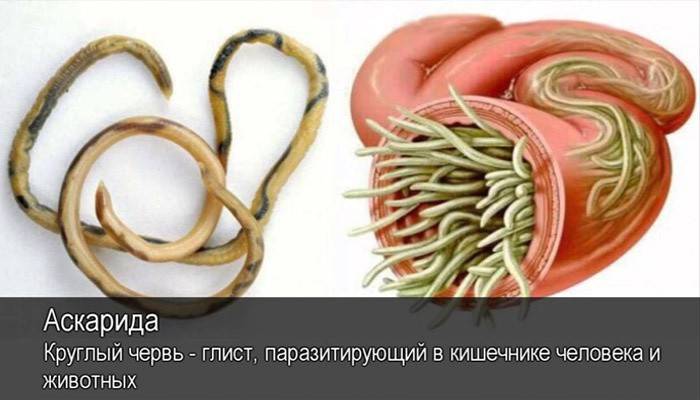
Examination for helminthiasis
Symptoms of the presence of parasites do not always help to accurately diagnose an invasion. After all, manifestations can in many cases be confused with the course of another disease. Thus, food poisoning can usually be mistaken for worms. Therefore, the presence of intestinal worms and protozoa can be determined not only by characteristic signs, but also with the help of tests.
As a rule, to explain abdominal pain due to worms and to check whether there are parasites in the gastrointestinal tract, the doctor gives a referral for a stool and blood test. Based on the results, a diagnosis is made and additional tests are prescribed, for example, using imaging techniques. All this will help to find out whether your stomach ache may be due to worms or another health problem.
The following population groups need to be periodically examined for helminth infections:
- Students of preschool and school institutions.
- For catering workers.
- Workers of medical institutions.
- Veterinarians.
- Hunters.
- Farm workers.
What to do
Treatment of diarrhea from worms is carried out as part of a general set of measures. The presence of loose stools is a reason to examine the patient for intestinal infection and parasites. For this purpose, feces are examined under a microscope and bacteriological culture is done. Regardless of the type of parasite detected, the patient first receives sorbents (Enterosgel, Polysorb, Filtrum), and in parallel, lost fluid and salts are restored using special solutions (Regidron, Glucosolan). The patient must follow a diet with the exception of foods that provoke gas formation and dilution of stool (milk, legumes, coffee, soda, spicy foods, raw vegetables, etc.).
It will also be interesting: Helminthic infestation in infants
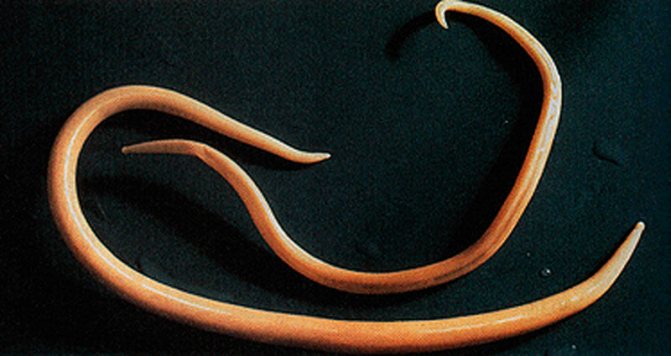
In case of profuse, watery, loose stools, regulators of intestinal motility (Loperamide, Imodium) are prescribed until the stool consistency normalizes. Antiparasitic therapy is carried out as prescribed by a doctor, the choice of drug is carried out in accordance with the type of parasite detected, doses are selected according to the age and weight of the patient. To eliminate disturbances in the microbial community in the intestines, some doctors use probiotics (Linex, Bifiform, Rioflora, etc.). Prevention of subsequent infections consists of following the rules of personal hygiene, proper nutrition, and increasing the level of sanitary literacy of people.
After watching the video, you will learn why diarrhea occurs due to worms:
Treatment
After an infected person has learned what parasites live in the intestines, it is necessary to get rid of them. Depending on the clinical case, medicines of both pharmaceutical production and those prepared according to folk recipes are used. In advanced cases, intestinal parasites are eliminated through surgery.
How to fight and remove worms and protozoa is determined by a specialist. Self-treatment is dangerous and fraught with unexpected consequences. Special caution is needed for children under 12 years of age, pregnant and nursing mothers.
Drug treatment
Broad-spectrum drugs from the group of benzimidazoles will help get rid of parasites in the intestines. These are such well-known drugs as Albendazole and Mebendazole. They treat infestations caused by round and flatworms. Macrocyclic lactones such as Ivermectin are effective against adult and migrating larval stages of nematodes.
The drug Praziquantel is usually prescribed for schistosomiasis, taeniasis and most intestinal intestinal parasite infestations/infections.

The course of treatment, depending on the disease, lasts from 1 to 14 days. If necessary, therapy is repeated.
The worm that lives in the intestines will come out even faster if you supplement treatment with lifestyle changes. For example, avoiding sweet, fatty and heavy foods helps get rid of parasites.
Folk remedies
Tablets against parasites are not only highly effective, but also have side effects. Therefore, many patients use proven folk recipes. They are based on the use of medicinal plants, vegetables, oils and other substances, such as soda.
The following products have been shown to be effective in controlling parasites in the small intestine:
- Garlic. It is used raw, in the form of tinctures, decoctions, enemas and in combination with honey, milk, and herbs.
- Pumpkin. Both pulp and juice are suitable. But the most powerful medicine is pumpkin seeds.
- Sagebrush. Taken as an alcohol tincture.
- Tansy. Infusions and decoctions are also prepared from this herb.
- Castor oil.
- Carrot juice and seeds.
- Decoction of pomegranate peels.
- Flaxseed and oil.
Treatment of children and pregnant women
Toxic medications are strictly contraindicated for both young children and pregnant women. Also, a contraindication to the use of most anthelmintic drugs is the period of breastfeeding. Helminth infections in such patients should be treated as gently as possible, even if recovery takes longer.
Therapy for helminthiasis is not carried out in the first trimester of pregnancy. At this time, treatment can cause more harm than the disease itself. Next, women, as well as children under 2-3 years of age, are prescribed piperazine, which has the most gentle effect. In addition, folk remedies are used:
- Raw pumpkin seeds;
- Birch leaf decoction;
- Walnut.
It is undesirable to use tansy and wormwood, as well as onions, garlic and other products that have an irritating effect.
Folk recipes
Many people try to fight helminthic infestations on their own, using folk recipes. Before starting home therapy, they should seek advice from specialists, since many worms can only be affected by medications. “Old-fashioned” methods can be used as an additional measure in the complex treatment and prevention of worms.
- Dried and powdered ginger (1 tsp) should be placed in a bowl, water (50 ml) is added to the palate.
These components are mixed with each other to form a homogeneous paste. This substance must be consumed on an empty stomach for a week. Also, when fighting helminthic infestations, you can use alcohol tinctures of ginger, and also eat it in its pure form (used as a seasoning). - Flaxseed (100g) and clove inflorescences (10g) are placed in a glass bowl.
These components are ground to a powdery consistency. This remedy should be taken 25g at a time (at least 5 times a day). If therapy is carried out by a patient whose weight exceeds 70 kg, then the dosage is increased. The course is 30 days (the schedule must be followed: 3 days on, 3 days off). - The following components are placed in a glass container (pre-crushed): bee honey (2 tsp), lemon (1 pc), garlic cloves (2 heads). After these ingredients have been well mixed with each other, water (1 liter) is added to them, which has been brought to a boil and cooled. This garlic infusion should be drunk up to 4 times a day. The course of therapy is three days. If necessary, the drug is taken for a few more days.
- An enema (cleansing) can help remove both adults and their larvae from the intestines.
You should prepare a solution for which you will need salt (15g) and water (1l). The mixture is heated, after which baking soda (15g) is added to it. After this solution has been introduced, you need to wait for about 30 minutes and try to keep it in the intestines. After the procedure, mucus should come out with the bowel movements, the presence of which will indicate that everything was done correctly.
Prevention
To avoid contracting stomach helminthiasis, it is recommended to wash your hands after visiting the toilet, coming from the street and after excavation work. Vegetables and fruits should be washed under running water and unboiled water should not be consumed. Meat and fish must be prepared in compliance with all technologies, having undergone full heat treatment. People whose profession involves raw meat and fish products should undergo regular screening for helminthiasis. To avoid gastric chlamydia, you need to avoid casual sex, and consult a doctor at the first symptoms.
How is diagnosis carried out?
Chlamydia and intestinal parasites in humans are often disguised as other gastrointestinal diseases, so it is difficult to detect helminthic infestation. A gastroenterologist, infectious disease specialist or parasitologist can help identify helminths in the human stomach. The following diagnostic methods will help to accurately determine that worms live in the gastrointestinal tract:

PCR analysis will help identify pathology.
- general blood analysis;
- examination of stool for worm eggs (for extraintestinal forms of infestation this is only 20% indicative);
- polymerase chain reaction for the detection of antibodies to helminths;
- direct immunofluorescence method for detecting chlamydia;
- bioresonance diagnostics using the vegetative resonance testing method.
Symptoms: how to recognize stomach helminthiasis?
A sharp deterioration in health and low body weight may indicate the presence of helminths.
Worms have a mouth opening with teeth, with the help of which they stick to the walls of the stomach. During their life, stomach worms produce toxins that are carried throughout the body through the bloodstream. The teeth of the worms cause mechanical injuries to the mucous membranes of the organ, resulting in the formation of wounds on the walls of the stomach. Motility and secretion of the organ are impaired. The condition is accompanied by the following symptoms:

A sign of the presence of “settlers” in the organ may be the appearance of a jam.
- pain in the epigastric region;
- bloating;
- refusal to eat or excessive appetite;
- weight loss;
- bad breath;
- coating on the tongue;
- skin rashes;
- jams in the corners of the lips;
- dry and brittle hair and nails;
- stool instability (constipation or diarrhea);
- psycho-emotional instability;
- sleep disorder;
- aching joints;
- headache;
- itching in the anus;
- fast fatiguability.
Intestinal worms
Worms live in the small, large, and rectal intestines
Detecting worms in the pancreatic ducts without special research methods is quite problematic. As a rule, their expulsion requires long-term treatment associated with a certain diet, as well as maintaining hygiene.
Popular diagnostic methods include: stool examination, tape test to detect worm eggs
In addition, other methods will help detect worms in the stomach and pancreas:
- PCR (DNA analysis);
- tomography;
- FGDS (fibrogastroduodenoscopy).
Therefore, when using traditional medicine, you must first undergo tests and consult with a specialist.

